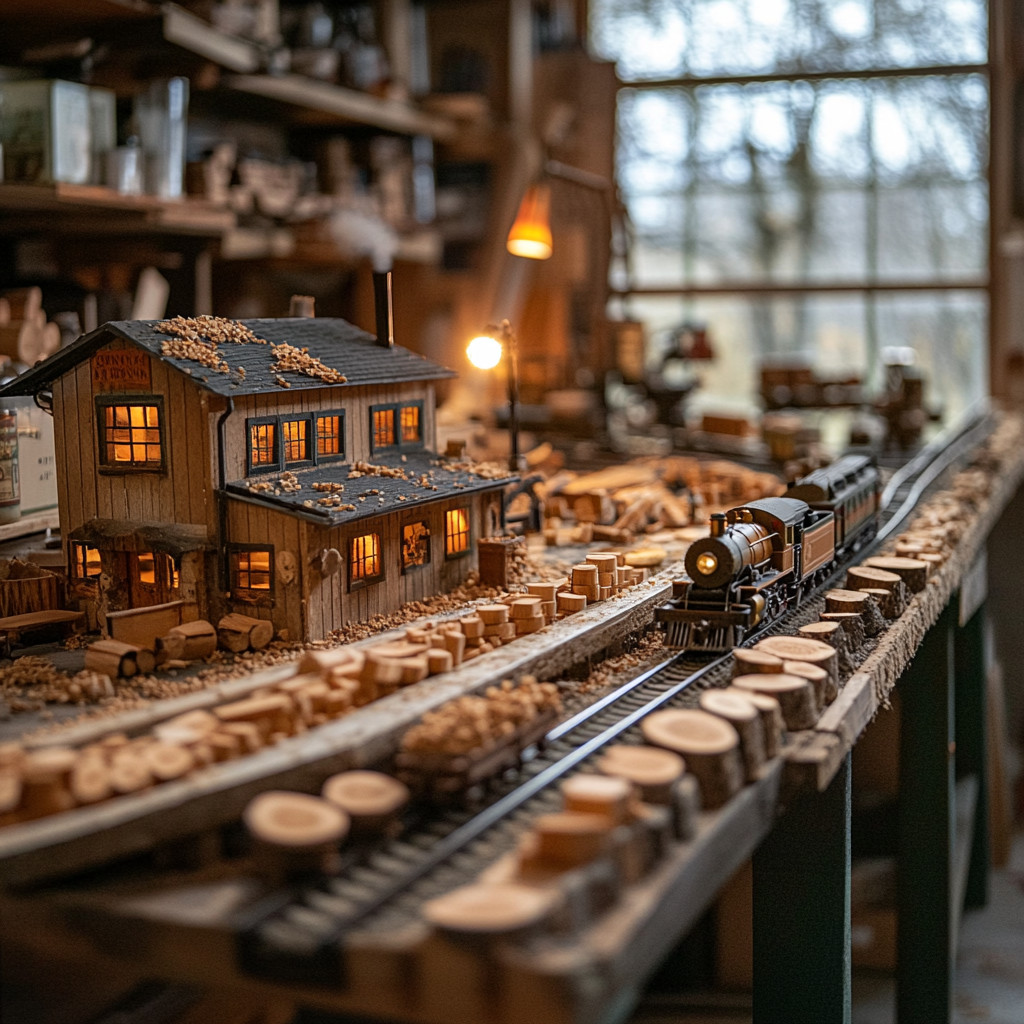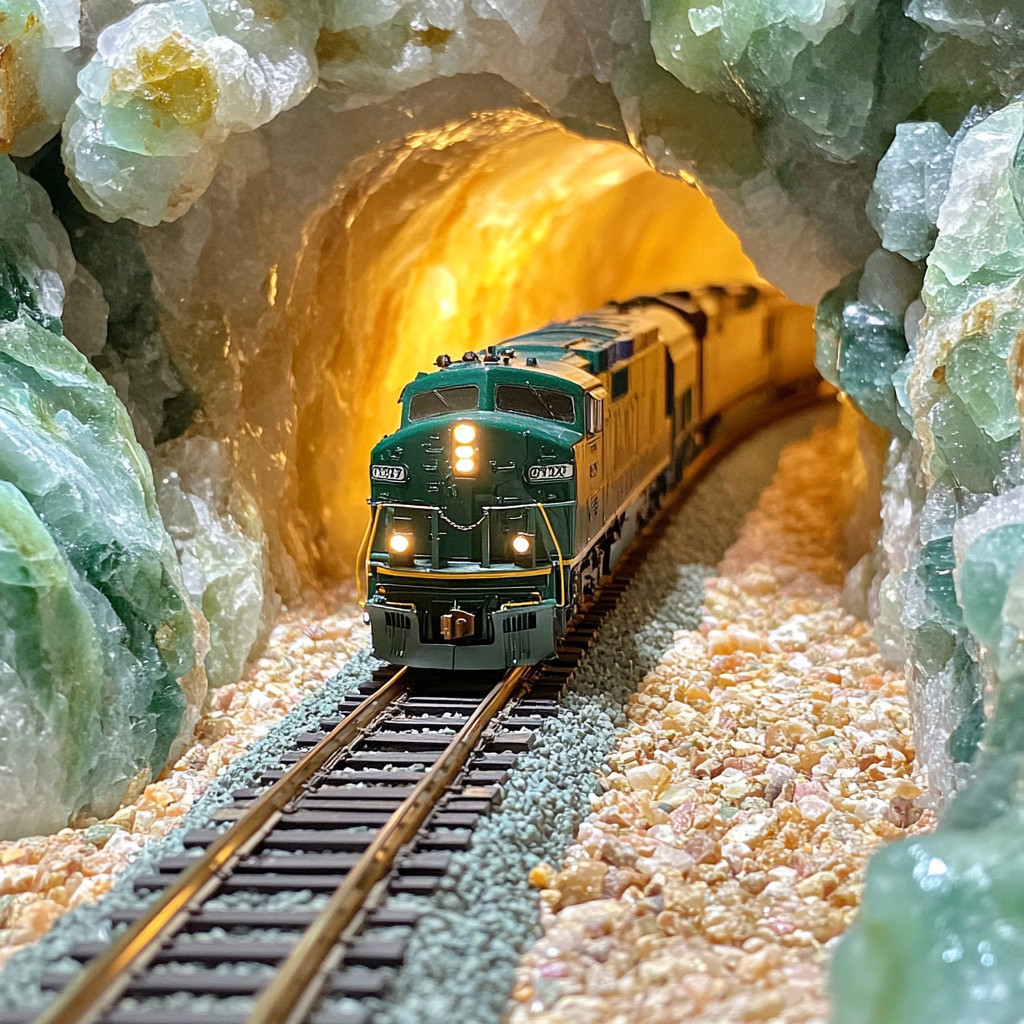Do you want to start building model railway layouts, but have no idea where to start and spend your money effectively? When planning and building an electric railroad layout, several key areas deserve careful investment. This leads to a functional, realistic, and durable setup.
The last thing you want is to spend your entire budget on model train scenery, but have nothing to spend on the beautifully crafted locomotives from brands like Bachmann and Lionel.
In this guide, I’ll help you set the right expectations for what you’ll pay for each component of your model railroad build. I’ll also share some money saving tips, allowing you to create a bigger layout with fewer resources.
Want to build your dream model railroad? Download my FREE guide

Privacy Policy: We hate SPAM and promise to keep your email address safe
Money Train Spending Guide: Top 10 Components
Pay attention and learn where to spend your money to set realistic expectations. These 10 components of a model train plan are a good starting point, but you may incur additional costs depending on the specifics of your project.
Here’s a table giving you a sneak peek at the prices you can expect to pay for the average model train layout:
| Category | Average cost ($) | Key Brands/Tools | Tips |
|---|---|---|---|
| Locomotives | $100–$300 | Bachmann, Kato, Athearn | Use nickel-silver tracks for durability and smooth electrical flow. |
| Track System | $150–$300 | Peco, Atlas, Kato | Use nickel-silver tracks for durability and smooth electrical flow. |
| Rolling Stock | $20–$50 per car | Walthers, Kadee, Rapido | Start with 5–10 cars for a small layout and expand as needed. |
| Scenery | $100–$300 | Woodland Scenics, Noch, DIY tools | Combine store-bought items with DIY methods to save costs and create custom landscapes. |
| Control Systems | $150–$500 | Digitrax, NCE, MRC | Choose DCC for flexibility and compatibility with future expansions. |
| Electrical Components | $50–$150 | Soldering irons, LEDs, wire kits | Use bus and feeder wiring for reliable power distribution. Add circuit breakers for safety. |
| Turnouts and Switches | $15–$30 per unit | Peco, Atlas | Manual turnouts are cost-effective, but powered ones add realism and convenience. |
| Lighting | $50–$150 | Woodland Scenics, pre-wired LEDs | Use LEDs for energy efficiency and long life. Also, add dimmers for mood effects. |
| Tools | $50–$100 | X-Acto, Weller (soldering), Dremel | Invest in quality tools for precision and durability, and a track-cleaning kit is essential. |
| Software | $50–$100 | AnyRail, SCARM, TrainPlayer | Plan your layout digitally to avoid costly mistakes during construction. |
1. Locomotives
Locomotives are the heart of your model train layout. All eyes will be on them when the layout is complete, so it’s worth spending on well-detailed models with smooth motors for realistic movement.
You’ll find that digital command control (DCC) equipped locomotives provide advanced features like sound and lighting. You’ll need to decide if they are worth paying extra for or if investing in the other areas on this list leads to a better overall approach.
It’s a good idea to spend money on reputable brands such as Bachmann, Kato, and Athearn. Expect the locomotives to range from $100–$300 each. This will depend on size, detail, and features.
Overall, starting with one or two high-quality engines gives you a better experience than having several low-quality models. Alternatively, you can buy electric train sets for adults if you don’t want to buy components separately.
2. Track System
Investing in a high-quality track system is crucial for smooth and reliable train operation. Therefore, opt for nickel-silver tracks, which offer excellent conductivity and resist corrosion. Flexible track sections allow for custom layouts, while sectional tracks are easier for beginners.
Don’t forget to find sturdy connectors and consider investing in track ballast for realism. Brands like Peco, Atlas, or Kato are trusted for quality. Additionally, proper planning helps avoid future track alignment issues.
For an average layout, expect to spend $150–$300. This money will go toward tracks, turnouts, and ballast materials.

3. Rolling Stock
Rolling stock enhances the realism and functionality of your layout. Look for cars with detailed paintwork and logos matching your chosen era or theme. Also, quality couplers (like Kadee) and metal wheels improve performance, which justifies the cost.
Furthermore, a mix of freight and passenger cars adds operational variety. Your toolkit will feel as if something is missing without these elements.
While kits can save money, pre-assembled cars are more convenient for beginners. Budget $20–$50 per car as a rule of thumb. Generally, it’s a good idea to start small and then expand your collection as your layout grows.
4. Scenery and Landscaping
Creating a realistic environment is essential for immersion. Consider investing in ready-made scenery materials or kits for trees, foliage, and grass. Additionally, buildings (plastic kits or laser-cut wood) add depth and realism.
You’ll also want to paint, plaster, and foam to create natural landscapes like mountains and rivers. Then, for a cost-effective approach, combine DIY methods with commercial materials. This approach depends on your patience, skills, and preferences.
Brands like Woodland Scenics offer versatile options. Ideally, you’ll want to budget $100–$300, depending on the complexity of your layout and model train layout theme.
5. Control Systems
For smooth operation, invest in a control system that matches your needs. Basic DC systems are affordable but limit control options. In comparison, DCC systems offer advanced features like simultaneous train operation, sound, and lighting effects.
Go with NCE, Digitrax, and MRC, since these brands provide reliable systems. It’s not unreasonable to spend $150–$500 on a starter set. Beginners will see that starting with DCC future-proofs your layout for expansion.

6. Electrical Components
Do you want to avoid power outages or trains running slower than you’d like? Then you can’t cut corners when it comes to your wiring.
Make sure to use bus and feeder wires for efficient electrical flow. You’ll also need to solder connections for durability, and consider circuit breakers or power districts for larger layouts.
Finally, use LED lighting to reduce energy consumption and add a realistic touch to model train scenery. Expect to pay around $50-$150 for quality electrical components.
7. Turnouts and Switches
Turnouts are critical for adding operational complexity, such as sidings or yards. It’s a good idea to look for quality switches from brands like Peco or Atlas. This almost guarantees you’ll have smooth transitions without derailments. Also, manual turnouts are affordable, but powered or DCC-compatible switches add convenience.
Expect a budget of $15–$30 per turnout, with larger layouts requiring multiple units. Generally, investing in reliable turnouts avoids frustration later.
8. Lighting
Lighting enhances the atmosphere and realism of your layout. Look for LED strips and bulbs that are energy-efficient. These will stand the test of time. Ideally, you can use them for streetlights, buildings, and train interiors.
Overall, dimmer controls or effects like flickering light add depth. Give it a try to get an extra dimension of creativity on your model train table. Additionally, pre-wired LEDs simplify installation for beginners. The average model railroad hobbyist will spend $50–$150 on lighting. However, this depends on the number of lights and your layout’s size.
9. Tools
Essential tools that almost any model train build will benefit from include soldering iron, precision cutters, tweezers, and a track-cleaning kit. Hence, invest in high-quality tools for longevity and ease of use. You’ll save money if you already have these tools around the house.
Additionally, specialized tools, such as a rail bender for curved tracks, may also be necessary for advanced projects. You can assume that a basic toolkit for model railroading costs around $50–$100.
10. Software
Model train design software simplifies layout planning and prevents costly mistakes. Programs like AnyRail, SCARM, or TrainPlayer let you experiment with a number of key variables. This includes track configurations, scenery placement, and electrical wiring.
These tools are particularly helpful for larger or more complex layouts. Software costs $50–$100, but many programs offer free trials or basic versions.
Tips To Save Money on Your Model Railway Build
According to my estimates above, the average model train layout build is about $1,000 to $2,500. Does this feel like way too high over your budget? Then there are ways to cut corners without sacrificing the quality of the build:
- DIY scenery: Create trees, rocks, and foliage using natural materials. Popular options are twigs, sponges, and painted foam. Also, experiment with crafting supplies instead of purchasing pre-made scenery to cut costs while adding a personal touch.
- Buy second-hand: Look for used locomotives, rolling stock, and track from online marketplaces, hobby forums, or swap meets. It’s a good idea to inspect items carefully to ensure they’re functional and undamaged. Overall, second-hand items can significantly reduce your overall budget.
- Start small: Begin with a modest layout and gradually expand your model train hobby. Focusing on a smaller area reduces initial costs and helps you learn essential techniques without overspending on unnecessary components.
- Plan your layout carefully: Use layout design software or graph paper to avoid costly mistakes during construction. Proper planning reduces wasted materials and leads to efficient use of resources.
- Join a model train club: Clubs often offer discounts, shared resources, or second-hand items. They’re also a great source of advice and support to avoid overspending on unnecessary purchases.

FAQ
For a small to medium-sized layout, expect to spend $1,000–$2,500. Costs vary based on scale, quality, and complexity. Moreover, start with essential items like track, power, and one locomotive. Over time, gradually invest in scenery, rolling stock, and additional features.
Focus on functionality, track, power, and control systems before investing in detailed scenery. A solid foundation is vital for smooth operation and reduces the need for rework later. Once trains run reliably, you can gradually add buildings, landscapes, and finishing touches.
High-quality tools allow you to build model railway layouts with precision, and they will last longer. However, you don’t need every specialized item. Start with basics like a soldering iron, precision knife, and track cleaner. Also, add advanced tools like rail benders or airbrushes as your layout grows.
DC systems are cheaper and simpler but limit train control. On the other hand, DCC systems cost more ($150–$500) but offer advanced features like multiple train operation, sound, and lighting.
Then, for long-term value and flexibility, DCC is a better investment. That’s especially true for larger layouts.
Start Saving Money on Your Model Railway Layout Today
Creating a model train layout doesn’t have to break the bank. Prioritize key investments, plan carefully, and incorporate cost-saving strategies. Also, focus on essentials like tracks, locomotives, and control systems before expanding gradually.
With creativity and smart spending, you’ll achieve a high-quality layout that delivers endless enjoyment without overspending. You can save even more money by reading the tips in my free eBook, which you can download below.
Want to build your dream model railroad? Download my FREE guide

Privacy Policy: We hate SPAM and promise to keep your email address safe

